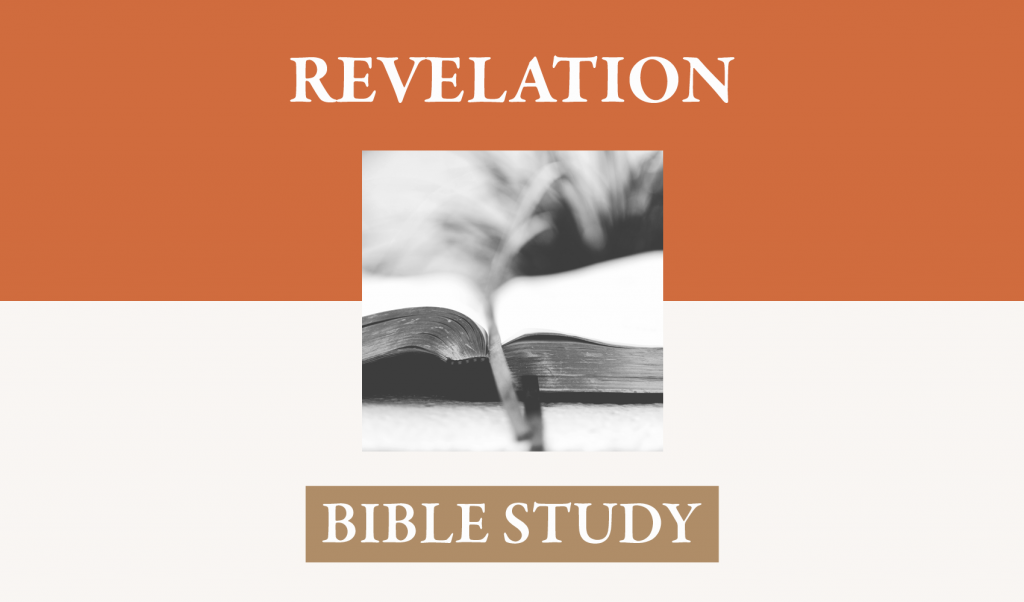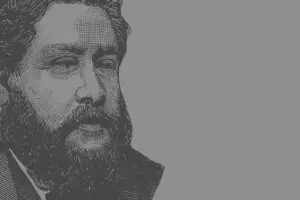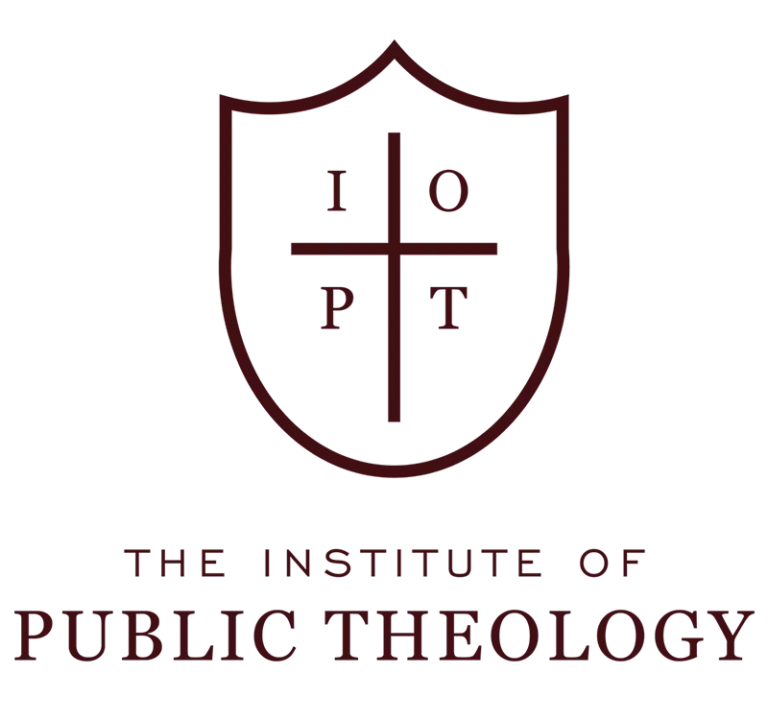Chapter 6 follows the revelatory vision in heaven, and of the heavenly viewpoint, that the death of Christ as the centerpoint of the eternal covenant puts into effect all the events that lead to and follow from that covenantal work of the redeeming Lamb who becomes the reigning Lion. It begins, therefore, with the assumption that Jesus, revealed in seal one, controls all the events of history in demonstration of his fully victorious work. The following seals show that Jesus reigns even in the unfolding of a world that is under the curse—war, enmity, famine and hunger, death and destruction both from malice and from natural disaster. It also is a world in which the redeemed will suffer, and often be killed, and will find no final respite from this threat as long as this fallen world stands (6:9-11). In the end, however, as revealed in the opening of seal six, the Lamb returns and the cataclysmic events that accompany that event will put into full flight those who have perpetrated the oppression and the death of the saints of God. They remain unrepentant even at the glorious appearing of Christ in judgment and will seek death by horrendous natural disaster as preferable to facing the wrath of the coming Lamb. This is a forecast of what John shows us in 9:6 and 21-21. These events are not necessarily sequential, but are set forth as observable and discreet elements that continue to overflow in havoc in the world. This summary in chapter 6 is expanded in various parts in following chapters.
Chapter 7 gives a picture of the certainty with which God will protect his people in the midst of these events in this fallen and hostile world. The 144,000 represent, as do the 24 elders, all the redeemed of all ages, composing the true Israel of God (Galatians 6:16; Romans 2:28, 29). We meet these again in chapter 14 as those who have “been redeemed from the earth,” as those “redeemed from mankind as firstfruits of God and the Lamb” (14:3, 4) before a reiteration of scenes of both persecution (17:6) and wrath (16:1) leading to the final events of history. They indeed are those given to the Son by the Father in the eternal covenant of redemption (John 17:1-3). Even before the events that set this world in a fallen condition with all the accompanying sorrows just described in the previous chapter, God has sealed his own and determined that they shall endure and manifest in the end his glory (13:10; 14:12). Jesus will lose none of those that the Father has given him, but according to his own prayer, they will be kept from the evil one (John 17:14, 15) People of all tongues and tribes and nations are seen, in a vision hearkening back to the feast of booths, waving palm branches and praising God and the Lamb for eternal salvation. Like
Chapter 8 sets the context for the text under consideration this week. This lesson falls within the process of opening the contents of the seventh seal of the scroll. The seventh seal, opened at the top of chapter 8, contains foundationally seven angels blowing seven trumpets. Within the blowing of these trumpets, the vision shows a series of events similar to the plagues that fell on
Chapter 9. The first “Woe.” It should be noticed that each of these woes has a mixture of horror produced by the release of hellish forces on the earth and the manifestation of divine sovereignty, revelation, and redemptive purpose. The first woe is connected most potently with the operation of Satan. The second woe comes from the peculiar providence and purpose of God (9:15). The third woe, ironically, consists of the complete victory of Christ (11:15) and is set forth in a vision of victory similar to that that capped off the opening of the first six seals (6:12-17). How should we view this fifth trumpet, which is the first woe?
A. Verses 1 and 2 – The origin of the First Woe
1. This happens in accordance with the eternal decree of God to glorify his Son through his redemptive work. We are in the middle of the opening of the seventh seal, all under the authority of the Lamb and to demonstrate his glory, and this woe is introduced by an angel blowing a trumpet.
2. Verse 1b – This first woe begins with the fall of Satan from heaven. His fall, though immediately the result of his pride and his opposition to the essence of God’s redemptive plan, is fitting into the transcendent purpose of God (Luke 4:1, 2; Luke 10:17-20; Mark 3:11, 12; John 10:1, 10; 2 Corinthians 4:4; Luke 10:21, 22)
3. Satan is given authority over those angels that followed him in his rebellion (“the key to the shaft of the bottomless pit”).
4. The opening of the shaft with its billowing smoke indicates that, in this present world, the impact of Satan’s fall and the operation of his demons hides the glory of God from those who have no love of truth and set their minds on merely earthly things (2 Corinthians 4:4; Philippians 3:18, 19; 2 Thessalonians 2:9-12). While the second woe seems to be more purely an act of God, this one comes from Satan but is still a divine manifestation of the destruction resident within rebellion against the Maker and Sustainer of creation.
B. Verses 3-6 – The horror of living under the oppressive systems engineered by Satan with no hope of recourse
1. The appearance of locusts hearkens back to Exodus 10 to the eighth plague. Those locusts completed the devastation of all vegetation. These do not harm vegetation, but only men.
2. The only people twho suffer under this unleashing of evil are those who are unsealed by God. Though the elect live in a world of oppression and devastation, in the end, evil can not harm them. The prayer, “Deliver us from the evil one” comes to have deep relevance in such a situation.
3. The five months indicates that the destructive power of evil appears periodically more intense to those who experience its ravages. Though their suffering comes from a world view they have embraced or practices that they pursue, they refuse to reject the source of this suffering. Though they are being overwhelmed with the suffering implicit within their rejection of God and their complicity in the things of Satan, they will not see that the evil one mocks them in these torments.
4. The intensity of the torment will bring those who are its subjects to the point of wishing to die, but death will elude them. Those who are involved in a worldly system that rejects the Lordship of Christ will eventually be consumed by the system and those who promote it. While it promises life, pleasure, power, and privilege, it sucks the life out of its followers; it leaves one with no transcendent purpose beyond this life and no reason even to continue this life.
C. Verses 7-11 – The malignant perversion of nature as the only operative power of evil.
1. The locusts, a symbol of a particular kind of suffering inflicted on a portion of God-haters, are described as having the appearance of horses prepared for battle. This infliction is recognized as aggressive and trained to destroy. God is using the insidiously destructive power of evil to inflict retribution on the system of evil. It serves as an example of what Peter described in 2 Peter 2:11-13, who sees the destruction of bold evil-doers by the very system that they promote: “suffering wrong as the wages for their wrongdoing.”
2. John’s vision possibly concerns the conduct of national powers—kings, dictators, tyrants, prime ministers, presidents (”on their heads were what looked like crowns of gold”)—who make great promises but degenerate into uncontrollable oppressors, acting as if they were gods, manifesting sovereignty, unopposable in their wills, in whose hands is the life or death of any subject. John is particularly concerned about the power of Rome, the pretension of its emperors to deity, and its growing opposition to the religion of Christianity, though its use in this woe is as a scourge to those who have “no fear of God before their eyes” (Romans 3:15-18).
3. In spite of its pretensions, however, John lets us know that these mighty god-like power machines were just men (”human faces”). In the end, they too will perish, they too will appear before God in judgment, but they “will not stand”(Psalm 1:5). Only those whose hope and righteousness are found in him will stand. More often than not, these deluded deifications of manhood will fall before another man who in turn will fall before another. “They that live by the sword shall die by the sword.”
4. There is an appearance of beauty in the promises and pretensions of totalitarian systems (”hair like women’s hair”) but their basic nature is destruction (“Their teeth like lion’s teeth”). So it is with all evil. Because God has created all things, there must be at some point a manifestation of the divine glory in all natural things, even the most grotesquely perverted and amalgamated. Thieves are often clever, and tyrants often are profound orators. Atheists often argue for justice or invent useful technology. They have to function outside of their own worldview to do so, but it can’t be helped in a world created by the triune God. Even this scourge has in it that brief flirtation with beauty.
5. The reason for any time of rule, or any dominance they have, comes purely from the overwhelming force (“breastplates like breastplates of iron”) they can exert. It is not from the power of truth or love that these locusts come to dominate and oppress the worldly people under their power, but solely from force and intimidation. The flurry of power and determination is overwhelming, giving the people on whom this woe has come a taste of the logical outcome of the system that they embrace. In final intention, (I started to write, “in the end,” but the symbol of the tail makes the pun too obvious), the unmitigated goal of these beings, or these systems of power, is to hurt people.
6. Verse 11 – This is the operation of Satan himself; he is the king over them but, ironically, and in accord with divine purpose, he can only harm those who consent to his rule. He becomes a lash of wrath under the control of God. Paul described this in Ephesians 2: “In which you once walked, following the course of this world, following the prince of the power of the air, the spirit that is now at work in the sons of disobedience.” And John gives a straightforward literal proposition in 1 John 5:18, 19 that is fundamental to what he writes here in powerful images: “We know that everyone who has been born of God does not keep on sinning, but he who was born of God protects him, and the evil one does not touch him. We know that we are from God, and the whole world lies in the power of the evil one.”
D. Chapter 9:13-21 – The second woe (the sixth trumpet) emphasizes God’s particular control over the events that threaten the very existence of the earth’s population. The initiation of this woe arises from “the four horns of the golden altar before God.” This too is in pursuit of the glorification of Christ’s redemptive work. So precisely under the decree of God it is that the text says the releasing angels were prepared for “the hour, the day, the month, and the year.” The fierceness of the wars on the earth and the futility of any of them, or all of them combined, to bring about any knowledge of God or repentance from sin (20, 21) shows the marvel of the work of Christ in his redemptive labors constituting him the “Prince of peace” (Isaiah 9:6). What the wars of men, with all the power and sophistication of their technology, their increasing deadlines in the killing of men, could not accomplish, Christ did by his death. Isaiah 9:8 – 10:4 shows that in war, while men fight against men for their cupidity and arrogant assumption of power, God also is burning in his wrath; But “for all this his anger has not turned away, and his hand is stretched out still.” What all the wars of all times in all nations for all purposes could not accomplish in satisfying the wrath of God against the lawlessness of sinful humanity, Christ did by his death. “Of the increase of his government and of peace there will be no end, on the throne of David and over his kingdom, to establish it and to uphold it with justice and with righteousness from this time forth and forevermore. The zeal of the Lord of hosts will do this” (Isaiah 9:7). The opening of these seals with the consequent blast of the trumpets continues to accumulate the infinite glory of the redemptive work of Christ, the Lamb slain for those whose names were written in the book of life before the foundation of the world. (Revelation 13:8).



























